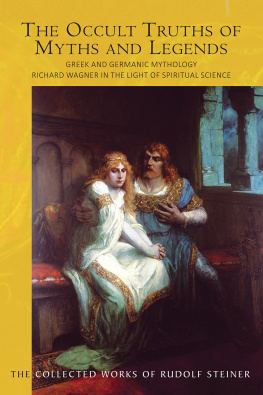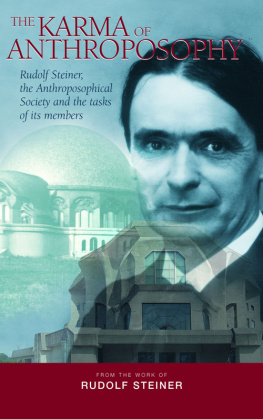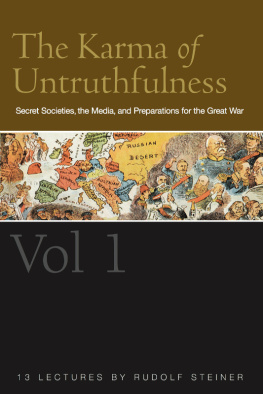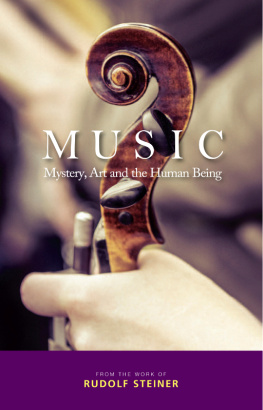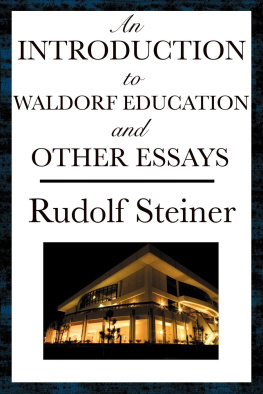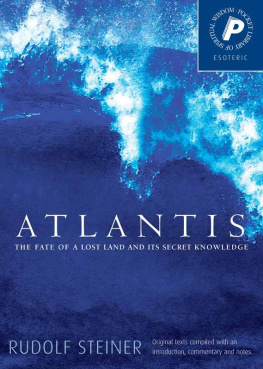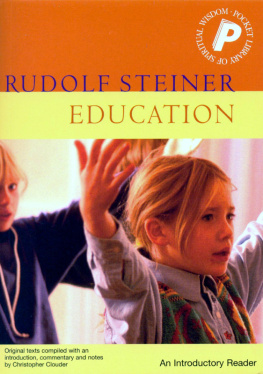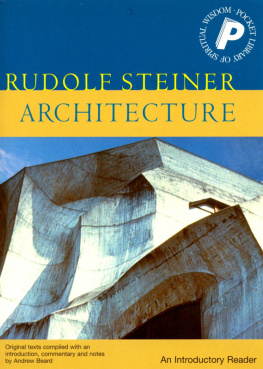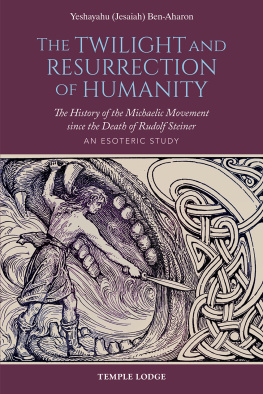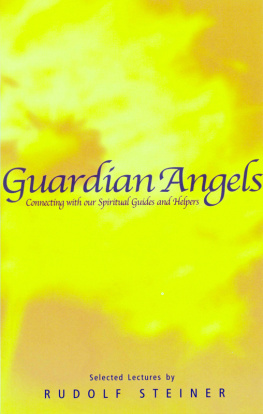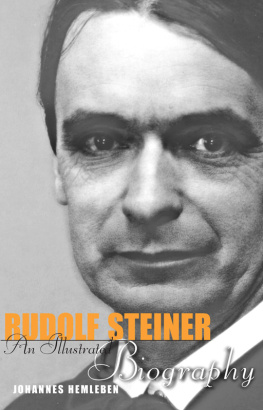ANTHROPOSOPHY
AND THE INNER LIFE
RUDOLF STEINER
Nine lectures given to members of the Anthroposophical Society at the Goetheanum, Dornach, Switzerland, 19th January to 10th February 1924
RUDOLF STEINER PRESS
Rudolf Steiner Press
Hillside House, The Square
Forest Row, RH18 5ES
www.rudolfsteinerpress.com
First English edition 1931
Revised Second edition 1961
Reprinted 1983
Ebook edition 2015
Originally published in German under the title Anthroposophie Eine Zusammenfassung nach einundzwanzig Jahren (volume 234 in the Rudolf Steiner Gesamtausgabe or Collected Works) by Rudolf Steiner Verlag, Dornach. Based on shorthand transcripts and notes, not reviewed by the speaker. This authorized translation is published by permission of the Rudolf Steiner Nachlassverwaltung, Dornach
Translated by V. Compton Burnett. Re-edited for the second edition by Owen Barfield
Rudolf Steiner Nachlassverwaltung, Dornach, Rudolf Steiner Verlag
This translation Rudolf Steiner Press 1961
All rights reserved. No part of this publication may be reproduced, stored in a retrieval system, or transmitted, in any form or by any means, electronic, mechanical, photocopying or otherwise, without the prior permission of the publishers
A catalogue record for this book is available from the British Library
ISBN 978 1 85584 468 1
CONTENTS
Lecture 1
Anthroposophy as what men long for today. (19th January, 1924)
Lecture 2
Meditation. (20th January, 1924)
Lecture 3
The transition from ordinary knowledge to the science of initiation. (27th January, 1924)
Lecture 4
Meditation and Inspiration, (1st February, 1924)
Lecture 5
Love, intuition and the human ego. (2nd February, 1924)
Lecture 6
Respiration, warmth and the ego. (3rd February, 1924)
Lecture 7
Dream-life and external reality. (8th February, 1924)
Lecture 8
Dreams, imaginative cognition and the building of destiny. (9th February, 1924)
Lecture 9
Phases of memory and the real self. (10th February, 1924)
ABOUT THE TRANSCRIPTS OF LECTURES
The results of my anthroposophical work are, first, the books available to the general public; secondly, a great number of lecture-courses, originally regarded as private publications and sold only to members of the Theosophical (later Anthroposophical) Society. The courses consist of more or less accurate notes taken at my lectures, which for lack of time I have not been able to correct. I would have preferred the spoken word to remain the spoken word. But the members wished to have the courses printed for private circulation. Thus they came into existence. Had I been able to correct them the restriction: for members only would have been unnecessary from the beginning. As it is, the restriction was dropped more than a year ago.
In my autobiography it is especially necessary to say a word about how my books for the general public on the one hand, and the privately printed courses on the other, belong within what I elaborated as Anthroposophy.
Someone who wishes to trace my inner struggle and effort to present Anthroposophy in a way that is suitable for present-day consciousness must do so through the writings published for general distribution. In these I define my position in relation to the philosophical striving of the present. They contain what to my spiritual sight became ever more clearly defined, the edifice of Anthroposophy certainly incomplete in many ways.
But another requirement arose, different from that of elaborating Anthroposophy and devoting myself solely to problems connected with imparting facts directly from the spiritual world to the general cultural life of today: the requirement of meeting fully the inner need and spiritual longing of the members.
Especially strong were the requests to have light thrown by Anthroposophy upon the Gospels and the Bible in general. The members wished to have courses of lectures on these revelations bestowed upon mankind.
In meeting this need through private lecture courses, another factor arose: at these lectures only members were present. They were familiar with basic content of Anthroposophy. I could address them as people advanced in anthroposophical knowledge. The approach I adopted in these lectures was not at all suitable for the written works intended primarily for the general public.
In these private circles I could formulate what I had to say in a way I should have been obliged to modify had it been planned initially for the general public.
Thus the public and the private publications are in fact two quite different things, built upon different foundations. The public writings are the direct result of my inner struggles and labours, whereas the privately printed material includes the inner struggle and labour of the members. I listened to the inner needs of the members, and my living experience of this determined the form of the lectures.
However, nothing was ever said that was not solely the result of my direct experience of the growing content of Anthroposophy. There was never any question of concessions to the prejudices or the preferences of the members. Whoever reads these privately printed lectures can take them to represent Anthroposophy in the fullest sense. Thus it was possible without hesitation when the complaints in this direction became too persistent to depart from the custom of circulating this material only among members. But it must be borne in mind that faulty passages occur in these lecture reports not revised by myself.
The right to judge such private material can of course, be conceded only to someone who has the pre-requisite basis for such judgment. And in respect of most of this material it would mean at least knowledge of man and of the cosmos insofar as these have been presented in the light of Anthroposophy, and also knowledge of what exists as anthroposophical history in what has been imparted from the spiritual world.
Extract from Rudolf Steiner, An Autobiography, Chapter 35, pp. 386388, 2nd Edition 1980, Steinerbooks, New York.
Editor's Preface
This book is the transcript of a shorthand report of nine lectures given by Rudolf Steiner in the early part of 1924, about a year before he died. Although his audience consisted very largely of people who had been studying for many years the spiritual science which is Steiner's legacy to the world (and which he also called Anthroposophie), he himself described the course as an Introduction. The German title of the book is Anthroposophie: eine Einfhrung in die Anthroposophische Weltanschauung. We will begin again, he observed in Lecture IV, where we began twenty years ago; and he may well have had in mind that the Movement itself had, in some sense, begun again only a month or two before with the solemn Foundation of the General Anthroposophical Society under himself as President at Christmas 1923. Though he proceeded ab initio, assuming no previous knowledge on the part of his hearers, this course is not an elementary exposition of Anthroposophy. We are gradually led deeply in, and the path is steep towards the end.
There are many very different approaches to the general corpus of revelations or teachings which constitutes Spiritual Science. As with Nature herself, it is often only as the student penetrates deeper and nearer to the centre that any connection between these different approaches become apparent. A reader of Christianity as Mystical Fact, for example, which dates from 1902 and of Steiner's lectures on the Gospels might well be surprised to find that it is possible to read Theosophy (1904) without ever discovering that the incarnation of Christ and the death on Golgotha are, according to him, the very core of the evolution of the universe and man. The truth is that the mastery of Anthroposophy involves, for our too stereotyped thinking, something like the learning of a new language. It would be possible to learn to read Greek and only afterwards to discover that the New Testament was written in that tongue.
Next page

